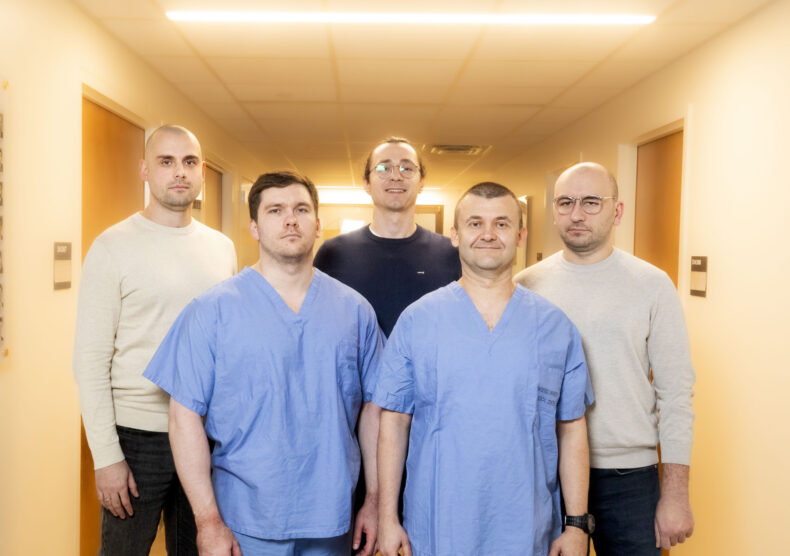by Matt Batcheldor
The Vanderbilt Transplant Center started 30 years ago as a dream, its founding director, former U.S. Sen. Bill Frist, MD, told the audience gathered to celebrate the milestone.
“That dream was to create a multi-organ transplant center housed not all over a campus but in a single location, because place matters,” said Frist, a full-time member of the Vanderbilt faculty from 1985 to 1994. “Place facilitates collaboration and place inspires. We would not do just hearts and kidneys, but we would add liver and then pancreas and bone marrow and do the extremely rare combined heart and lung transplants.”

Frist, who was senator from 1995 to 2007 and Senate Majority Leader from 2003 to 2007, was the keynote speaker at the Transplant Center’s 30th anniversary celebration, held Jan. 16 at the Student Life Center. The center’s patients over the years joined the center’s multidisciplinary team members, Tennessee Donor Services representatives and distinguished guests.
Frist described writing the 30-page blueprint for the center — which placed all transplant programs under the same roof and same organization, a visionary move at the time not practiced at other medical centers. Ike Robinson, MD, then vice chancellor for Health Affairs at Vanderbilt, accepted the proposal and in 1988 wrote a memo arguing for its approval.
“It’s timely and appropriate for us to take the necessary steps to establish a multi-department center for the purpose of developing our transplant programs and patient care research and education in all facets of organ transplantation,” he wrote. “I view this an issue of absolutely the highest priority.”
One year after the center opened, Frist and John Sawyers, MD, then chair of the Section of Surgical Sciences, recruited C. Wright Pinson, MBA, MD. Pinson would succeed Frist as director of the center and is now Deputy Chief Executive Officer and Chief Health System Officer for VUMC.
“Since establishing this transplant center, it has been an umbrella for heart, lung, kidney, liver, pancreas and stem cell transplantation and we have celebrated many, many landmarks here at Vanderbilt,” Pinson said.
One of those distinctions is new. In 2019, Vanderbilt transplanted more hearts than any other center in the United States except for Cedars-Sinai Medical Center in Los Angeles, which tied Vanderbilt. It is now the ninth largest transplant center in the country, out of 251 such centers.
Since its first kidney transplant in 1962, Vanderbilt surgeons have transplanted nearly 10,000 organs — more than 6,000 kidneys, 2,000 livers, 1,000 hearts and 500 lungs.
Over the years, Vanderbilt has had a succession of firsts, including the first single lung transplant in 1990, the first successful double lung transplant in 1994, Tennessee’s first paired kidney exchange in 2004 and first combined heart-kidney in 2008.
Vanderbilt now serves 9,000 transplant patients, and it takes about 150 people to work on a single transplant.
“Transplants take a team of many, many people,” Pinson said. “This is a paradigm for multidisciplinary activity. It’s the physicians, nurses, staff, social workers, pharmacists, donor services, family members all working together and lab techs, blood bankers, financial counselors, builders, contractors and on and on and on.
“It’s like a symphony.”
Seth Karp, MD, H. William Scott Jr. Professor, chair of the Section of Surgical Sciences and director of the Transplant Center, said the center’s motto is “whatever it takes.”
He offered an example: a staffer was flying to pick up a donor liver when the plane depressurized at 30,000 feet, requiring an emergency landing.
“She got right back on the next plane,” Karp said. “Every person in the transplant center has a story like this. Every person in the transplant center has done whatever it takes.”

















